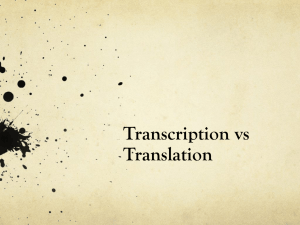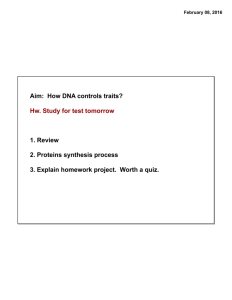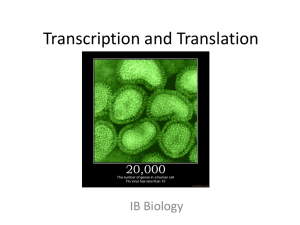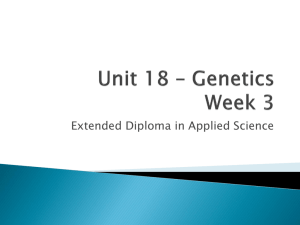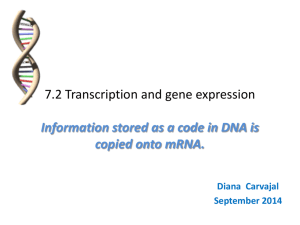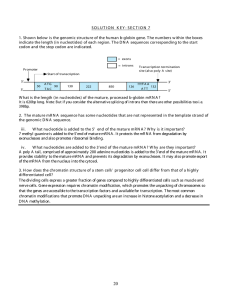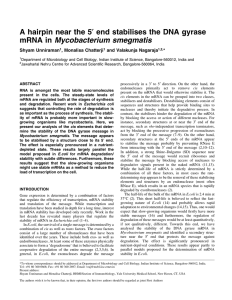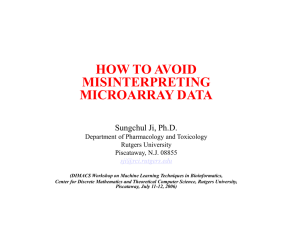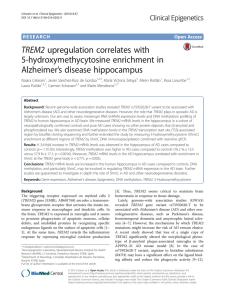Document 13541297
advertisement
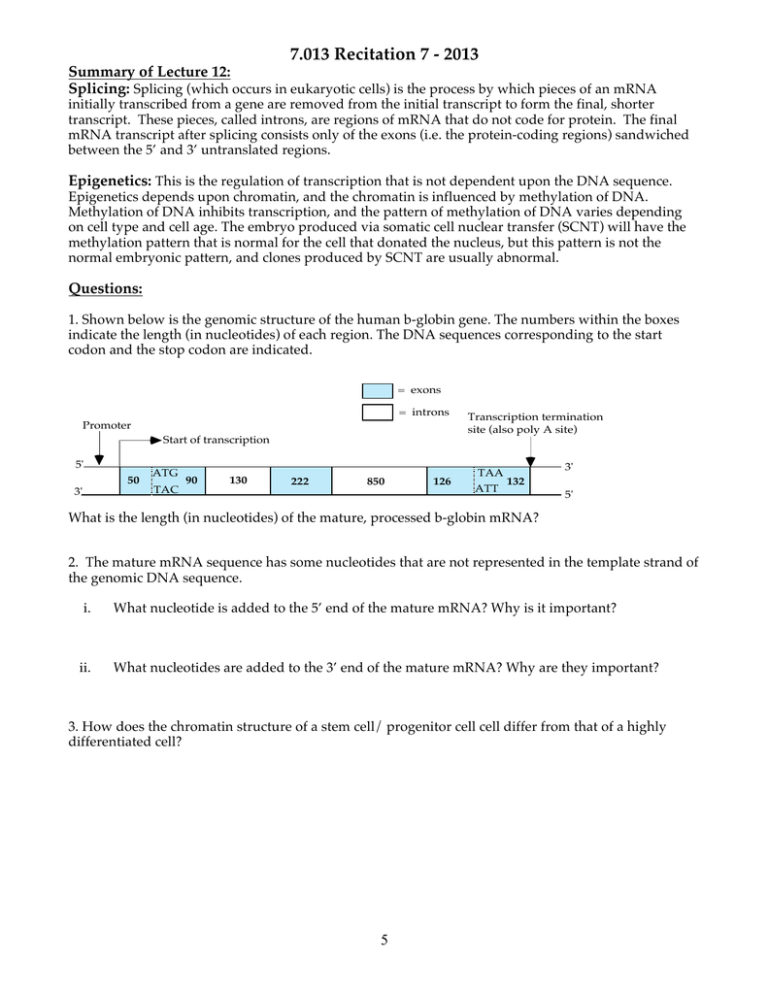
7.013 Recitation 7 - 2013 Summary of Lecture 12: Splicing: Splicing (which occurs in eukaryotic cells) is the process by which pieces of an mRNA initially transcribed from a gene are removed from the initial transcript to form the final, shorter transcript. These pieces, called introns, are regions of mRNA that do not code for protein. The final mRNA transcript after splicing consists only of the exons (i.e. the protein-coding regions) sandwiched between the 5’ and 3’ untranslated regions. Epigenetics: This is the regulation of transcription that is not dependent upon the DNA sequence. Epigenetics depends upon chromatin, and the chromatin is influenced by methylation of DNA. Methylation of DNA inhibits transcription, and the pattern of methylation of DNA varies depending on cell type and cell age. The embryo produced via somatic cell nuclear transfer (SCNT) will have the methylation pattern that is normal for the cell that donated the nucleus, but this pattern is not the normal embryonic pattern, and clones produced by SCNT are usually abnormal. Questions: 1. Shown below is the genomic structure of the human b-globin gene. The numbers within the boxes indicate the length (in nucleotides) of each region. The DNA sequences corresponding to the start codon and the stop codon are indicated. = exons = introns Promoter Start of transcription 5' 50 3' ATG TAC 90 130 222 850 126 Transcription termination site (also poly A site) !!!!!TAA 132 ATT 3' 5' What is the length (in nucleotides) of the mature, processed b-globin mRNA? 2. The mature mRNA sequence has some nucleotides that are not represented in the template strand of the genomic DNA sequence. i. What nucleotide is added to the 5’ end of the mature mRNA? Why is it important? ii. What nucleotides are added to the 3’ end of the mature mRNA? Why are they important? 3. How does the chromatin structure of a stem cell/ progenitor cell cell differ from that of a highly differentiated cell? 5 MIT OpenCourseWare http://ocw.mit.edu 7.013 Introductory Biology Spring 2013 For information about citing these materials or our Terms of Use, visit: http://ocw.mit.edu/terms.

